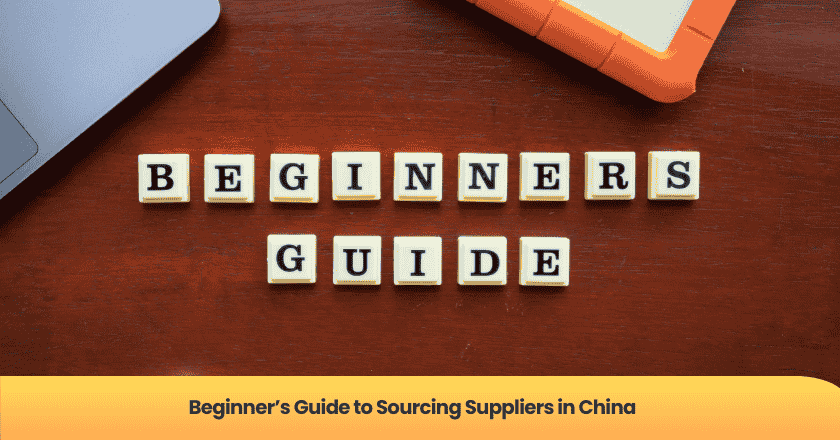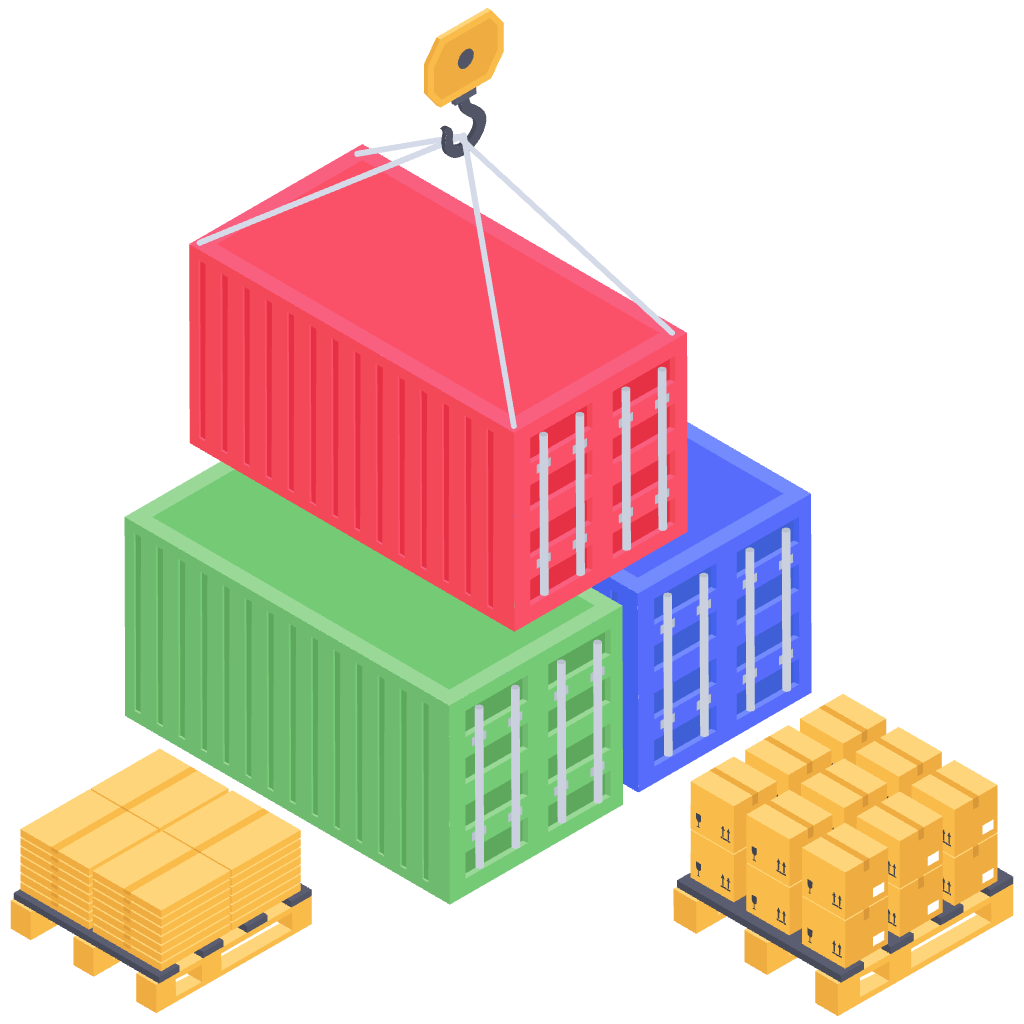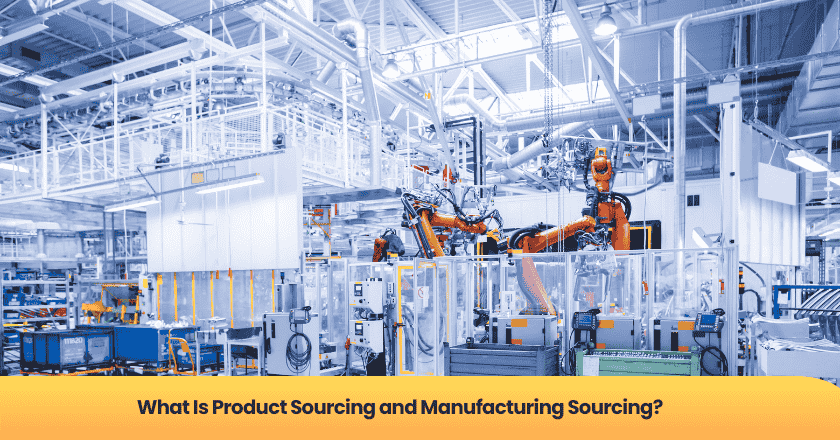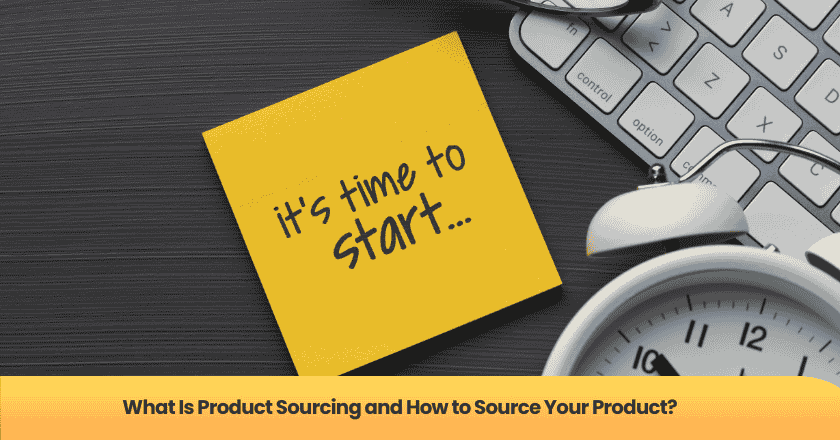
You want to start sourcing suppliers in China but feel uncertain about where to begin. With the right process, you can find reliable suppliers and build strong partnerships. A sourcing agent often helps you navigate the complexities of the market. You need to identify reliable suppliers who meet your standards. When sourcing suppliers in China, focus on understanding regulations and building a supplier list. China offers vast opportunities if you approach sourcing suppliers in China with clear steps and careful research.
Key Takeaways
• Start sourcing by researching suppliers using online platforms, sourcing agents, and trade shows to build a strong supplier list.
• Define clear product specifications and quality standards to get accurate quotes and avoid misunderstandings.
• Evaluate suppliers carefully by checking their background, requesting samples, and conducting factory audits when possible.
• Negotiate prices and payment terms confidently, and always use clear contracts to protect your business.
• Plan for import costs, shipping methods, and customs requirements to ensure smooth delivery and avoid surprises.
Benefits
Cost Advantages
When you source products from china, you gain access to some of the most competitive prices in the global market. Manufacturers in china benefit from economies of scale. They produce large quantities, which lowers the cost per unit. You can often negotiate better deals when you order higher volumes. This cost efficiency allows you to increase your profit margins or offer more attractive prices to your customers.
Tip: Always compare quotes from multiple suppliers in china. This approach helps you understand the market rate and avoid overpaying.
You also save on labor and material costs. Many factories in china have streamlined their production processes. They use advanced machinery and skilled workers to keep expenses low. As a result, you can source high-quality products at a fraction of the price you might pay elsewhere.
Product Variety
china stands out for its vast product selection. You can find almost any item you need, from electronics to textiles and everything in between. The manufacturing sector in china covers a wide range of industries. This diversity gives you the flexibility to expand your product line or test new markets with minimal risk.
• You can source custom products tailored to your specifications.
• You have access to the latest trends and innovations, as factories in china often update their offerings quickly.
• You can easily switch suppliers if you want to try different product categories.
A wide product variety means you can respond quickly to changing customer demands. You stay competitive in your market by offering unique or trending items that are difficult to find elsewhere.
Sourcing Suppliers in China
Finding the right manufacturer in China requires a clear sourcing strategy. You need to explore multiple channels to build a strong list of potential manufacturing partners. This process helps you identify reliable suppliers and avoid costly mistakes. Below, you will learn how to use online platforms, sourcing agents, and trade shows to create your longlist and shortlist of Chinese suppliers.
Online Platforms
Online platforms give you instant access to thousands of manufacturers across China. You can search for suppliers by product category, location, or certification. These platforms let you compare options quickly and efficiently. When sourcing suppliers in China, you should start by building a longlist of potential partners.
• Use filters to narrow down your search based on your product requirements.
• Check supplier profiles for business licenses, certifications, and years of experience.
• Read reviews and ratings from other buyers to gauge reliability.
Tip: Always send an initial inquiry to several suppliers. Ask about minimum order quantities, production capabilities, and lead times. This step helps you evaluate their responsiveness and professionalism.
After you gather responses, you can create a shortlist. Focus on those who communicate clearly and meet your basic requirements. This approach increases your chances of finding the right manufacturer for your needs.
Sourcing Agents
A sourcing agent acts as your local representative in China. You can rely on a sourcing agent to bridge language and cultural gaps. They help you identify reliable suppliers, negotiate prices, and manage quality control.
• A sourcing agent can visit factories on your behalf and verify their legitimacy.
• They often have established networks, which speeds up the process of finding the right manufacturer.
• You can ask a sourcing agent to handle sample requests and coordinate logistics.
When sourcing suppliers in China, you should consider working with a sourcing agent if you lack experience or local contacts. A sourcing agent can help you avoid scams and ensure you only deal with trustworthy manufacturing partners.
Note: Always research your sourcing agent before hiring. Check their credentials, client feedback, and track record in sourcing products from China.
A good sourcing agent will help you build a shortlist of manufacturers who match your product specifications and quality standards. This step saves you time and reduces risk.
Trade Shows
Trade shows in China offer a unique opportunity to meet manufacturers face-to-face. You can see product samples, discuss requirements, and build relationships with potential manufacturing partners.
• Walk the exhibition floor and collect catalogs from different suppliers.
• Ask detailed questions about production processes and quality control measures.
• Take notes on each supplier to help you compare options later.
Attending trade shows allows you to quickly build a longlist of potential partners. You can then follow up with factory visits or sample requests to create your shortlist.
Pro Tip: Prepare a list of questions before attending. Focus on topics like lead times, customization options, and previous export experience.
Meeting suppliers in person helps you assess their professionalism and commitment. This step is essential for finding the right manufacturer and building a strong sourcing strategy.
Steps for Building Your Supplier List
You should follow a structured process when sourcing suppliers in China:
• Use online platforms, sourcing agents, and trade shows to gather a longlist of potential manufacturing partners.
• Research each supplier's background, certifications, and reputation.
• Make initial contact to request information and samples.
• Evaluate responses and narrow down your list to the most reliable suppliers.
• Arrange factory visits or audits if possible before making a final decision.
Remember: Careful supplier research and clear communication at the initial contact stage set the foundation for a successful partnership.
By following these steps, you increase your chances of finding the right manufacturer and building a reliable supply chain in China.
Product Requirements
Specifications
You need to define your product specifications before you contact any supplier. Clear specifications help you avoid misunderstandings and ensure you receive the product you want. Start by listing the key features your product must have. Include details such as:
• Dimensions (length, width, height)
• Materials and finishes
• Color options
• Packaging requirements
• Special functions or accessories
Tip: Share drawings, photos, or reference samples with your supplier. Visual aids reduce confusion and speed up the quoting process.
When you provide detailed specifications, you make it easier for suppliers to give accurate quotes and timelines.
Quality Standards
You must set clear quality standards for your products. Quality standards protect your business reputation and reduce the risk of returns or complaints. Decide which industry standards or certifications your product must meet. For example, you may require compliance with safety, environmental, or performance standards.
| Quality Standard | Description | Example Requirement |
|---|---|---|
| Safety | Meets safety regulations | CE, FCC, or RoHS compliance |
| Durability | Withstands regular use | 1-year warranty |
| Appearance | No visible defects | Uniform color, smooth finish |
Note: Always request documentation or test reports from your supplier to verify compliance.
Order Quantities
You should determine your order quantities early in the sourcing process. Suppliers often have minimum order quantities (MOQs) that you must meet. Calculate how much inventory you need based on your sales forecasts and storage capacity.
• Ask each supplier about their MOQ for your product.
• Negotiate if the MOQ is too high for your needs.
• Start with a small order to test quality and reliability.
Smaller orders help you minimize risk while you build trust with your supplier. As your business grows, you can increase your order size and negotiate better terms.
Evaluating Suppliers
Background Checks
You must conduct thorough background checks before you commit to any supplier in China. This process helps you avoid unreliable partners and ensures you work with a reputable company. Start by verifying the supplier's business license. You can request a copy and check its validity with local authorities. Look for registration details, business scope, and years of operation.
Next, review the supplier's certifications. These documents show compliance with industry standards and regulations. Common certifications include ISO, CE, and RoHS. You should also check if the supplier has export experience. Ask for references from other international clients. Contact these references to confirm the supplier's reliability and service quality.
Use online resources to research the supplier's reputation. Search for reviews, ratings, and any reported disputes. Many sourcing platforms display feedback from previous buyers. Negative reviews or unresolved complaints signal potential risks.
Tip: Always trust your instincts. If a supplier hesitates to provide documentation or answers vaguely, consider other options.
Sample Requests
Requesting product samples is a critical step in evaluating suppliers. Samples allow you to assess product quality, craftsmanship, and adherence to your specifications. You should ask for samples from every supplier on your shortlist. Compare these samples side by side to identify differences in materials, finish, and functionality.
When you receive a sample, inspect it carefully. Check for defects, consistency, and overall quality. Test the product under real-world conditions if possible. This hands-on approach helps you determine if the supplier can meet your standards.
• Request multiple samples if you plan to order different product variations.
• Ask for production samples, not prototypes, to see what you will actually receive in bulk orders.
• Clarify who covers the cost of samples and shipping before you place your request.
Note: A reputable company will provide samples willingly and respond promptly to your feedback.
Factory Audits
Factory audits give you a deeper understanding of a supplier's capabilities and working conditions. You can conduct audits yourself or hire a third-party inspection service. During an audit, you should evaluate the factory’s production capacity, equipment, and workforce. Observe the cleanliness and organization of the facility.
Check if the factory follows ethical labor practices and complies with safety regulations. Review their quality control processes. Ask to see records of previous inspections or test reports. A factory that welcomes audits usually operates transparently and values long-term partnerships.
Here is a simple checklist for your factory audit:
| Audit Item | What to Look For |
|---|---|
| Production Equipment | Modern, well-maintained machines |
| Workforce | Skilled, adequate staff |
| Quality Control | Documented procedures, inspections |
| Safety & Compliance | Proper signage, safety gear |
| Cleanliness & Organization | Tidy workspaces, clear workflow |
Pro Tip: Schedule audits before placing large orders. This step reduces risk and helps you build trust with your supplier.
By following these steps, you ensure that you only work with suppliers who meet your expectations and support your business goals.
Negotiating Terms
Price
You need to approach price negotiations with preparation and confidence. Research the market rate for your product before you start discussions. Gather quotes from several suppliers to understand the price range. Suppliers expect you to negotiate, so do not accept the first offer.
• Ask for a breakdown of costs, including materials, labor, and packaging.
• Compare these details to spot any hidden fees or inflated charges.
• Use your research to justify your counteroffer.
Tip: Stay polite and professional during negotiations. Suppliers respect buyers who communicate clearly and show knowledge of the market.
You can leverage order volume or long-term partnership potential to secure better prices. Suppliers often offer discounts for larger orders or repeat business. Make sure you confirm all negotiated prices in writing.
Payment
You must clarify payment terms early in the process. Suppliers in China usually offer several options, such as wire transfer, PayPal, or letter of credit. Each method has different risks and fees.
• Wire transfers are common but require trust between you and the supplier.
• Letters of credit provide security for both parties but involve more paperwork.
• PayPal offers convenience for small orders but may have higher fees.
| Payment Method | Security Level | Typical Use Case |
|---|---|---|
| Wire Transfer | Medium | Bulk orders |
| Letter of Credit | High | Large transactions |
| PayPal | Low | Sample or small orders |
You should negotiate payment schedules. Many suppliers ask for a deposit upfront, with the balance due before shipment. Try to split payments based on production milestones to reduce risk.
Contracts
You need a clear contract to protect your interests. The contract should outline product specifications, price, payment terms, delivery dates, and quality standards.
• Include penalties for late delivery or substandard products.
• Specify dispute resolution methods, such as arbitration or mediation.
• List all agreed terms in detail to avoid misunderstandings.
Note: Review the contract with a legal expert familiar with international trade. This step helps you avoid costly mistakes and ensures compliance with import regulations.
A well-drafted contract sets expectations and builds trust between you and your supplier. You safeguard your business and create a foundation for a successful partnership.
Importing Products from China
Import Regulations
When you start importing products from China, you must understand the import regulations in your country. Each country has its own rules for importing goods. You need to check if your goods require special permits or certifications. Customs authorities may ask for documents such as invoices, packing lists, and certificates of origin. You should always keep your paperwork organized. This step helps you avoid delays when importing goods.
Tip: Contact your local customs office before you begin your import business. They can explain the latest requirements for importing products from China.
Total Costs
You must calculate the total costs before you commit to importing products from China. The price you pay to the supplier is only one part of the total cost. You also need to include shipping fees, insurance, customs duties, and taxes. Sometimes, you may need to pay for storage or inspection fees. If you ignore these extra costs, your import business may lose money.
Here is a simple table to help you track your expenses:
| Cost Item | Description |
|---|---|
| Product Price | Amount paid to supplier |
| Shipping Fees | Freight charges for goods |
| Insurance | Protection for goods in transit |
| Customs Duties | Taxes on importing goods |
| Other Fees | Storage, inspection, or handling |
You should always ask your supplier for a detailed quote. This way, you can plan your budget and avoid surprises.
Tariffs
Tariffs are taxes that governments charge on imported goods. When importing products from China, you must check the tariff rates for your goods. Tariffs can change based on the type of goods and your country's trade agreements with China. High tariffs can increase your total costs and affect your profit margins.
You can find tariff information on your government’s customs website. If you are new to international trade, you may want to consult a customs broker. They can help you classify your goods and calculate the correct tariffs.
Note: Always stay updated on tariff changes. International trade policies can shift quickly and impact your import business.
Logistics for Importing Goods
Shipping Methods
You need to choose the right shipping method when importing goods from China. The main options include air freight, sea freight, and express courier. Air freight works best for small, high-value goods that require fast delivery. Sea freight suits large shipments and offers lower costs, but delivery takes longer. Express couriers provide door-to-door service and handle customs clearance, making them ideal for urgent or sample shipments.
| Shipping Method | Speed | Cost | Best For |
|---|---|---|---|
| Air Freight | Fast | High | Small, urgent goods |
| Sea Freight | Slow | Low | Large, bulky goods |
| Express Courier | Very Fast | Highest | Samples, urgent goods |
Tip: Always compare shipping quotes and transit times before you decide. This step helps you balance cost and speed for your importing products from china.
Customs
You must prepare for customs clearance when importing goods. Customs authorities in your country will inspect your shipment and review your documents. You need to provide invoices, packing lists, and certificates of origin. Missing or incorrect paperwork can delay your goods at the border. You should work with a customs broker if you feel unsure about the process. Brokers help you classify your goods correctly and pay the right duties.
Note: Stay updated on import regulations in both China and your home country. This knowledge helps you avoid unexpected issues during customs checks.
Delivery
After customs clearance, you arrange for final delivery of your goods. You can choose door-to-door, port-to-door, or port-to-port delivery options. Door-to-door delivery offers the most convenience, as the shipping company handles everything from pickup in China to arrival at your location. For port-to-port delivery, you manage local transport after the goods reach your country. Always track your shipment and confirm delivery dates with your logistics provider. Timely delivery ensures you meet customer expectations and keep your supply chain running smoothly.
Complete Guide to Avoiding Pitfalls
Quality Issues
You face many challenges when sourcing goods from china. Quality issues often cause delays and financial losses. You should inspect samples before placing large orders. Request detailed product specifications and confirm them with your supplier. Use third-party inspection services to check goods before shipment. If you receive defective goods, document the problems with photos and written reports. Communicate these findings to your supplier immediately. This complete guide helps you avoid costly mistakes and maintain high standards for your goods.
Tip: Always set clear quality benchmarks and include them in your contract. This step protects your business and ensures you receive goods that meet your expectations.
Communication
Effective communication plays a vital role in sourcing goods from china. You should use simple language and confirm every detail in writing. Misunderstandings often lead to incorrect goods or missed deadlines. Schedule regular updates with your supplier and ask for progress photos during production. Use messaging apps or email to keep records of all conversations. If you notice any confusion, clarify your requirements right away. This complete guide recommends building a checklist for each order to track important details.
• Confirm order quantities and specifications.
• Set clear delivery dates.
• Review payment terms and shipping methods.
• strong communication strategy helps you avoid errors and ensures your goods arrive as planned.
Disputes
Disputes sometimes occur when importing goods from china. You should address problems quickly and professionally. Gather all relevant documents, such as contracts, invoices, and inspection reports. Present your case clearly to your supplier and suggest practical solutions. If you cannot resolve the issue directly, consider using mediation or arbitration services. Many sourcing platforms offer dispute resolution support. Keeping detailed records of your transactions helps you prove your claims and recover losses.
| Dispute Type | Recommended Action |
|---|---|
| Quality Problems | Share evidence, request replacement |
| Delivery Delays | Negotiate compensation, adjust timelines |
| Payment Issues | Review contract, seek mediation |
You protect your business by following the steps in this complete guide and staying proactive when handling disputes over goods from china.
Best Practices
Supplier Relationships
You build strong supplier relationships by maintaining open and honest communication. Respond to messages quickly and provide clear feedback on samples or shipments. Show respect for your supplier’s time and expertise. You can schedule regular check-ins to discuss production updates or address concerns.
• Share your business goals and growth plans.
• Recognize good performance with positive feedback.
• Resolve issues calmly and professionally.
Tip: A reliable supplier values long-term partnerships. You gain better service and flexibility when you invest in the relationship.
Ongoing Quality Control
You must monitor product quality at every stage. Set up a quality control process that includes inspections before, during, and after production. Request detailed reports and photos from your supplier. Use third-party inspection services for added assurance.
• Create a checklist for product specifications and standards.
• Review samples from each production batch.
• Document any defects and share findings with your supplier.
| Quality Control Step | Purpose |
|---|---|
| Pre-production | Prevents early mistakes |
| In-line inspection | Catches issues in process |
| Final inspection | Confirms finished quality |
Note: Consistent quality checks help you avoid costly returns and protect your reputation.
Market Trends
You stay competitive by tracking market trends. Research new materials, designs, and technologies in your industry. Attend trade shows or join online forums to learn about changes in consumer demand.
• Subscribe to industry newsletters.
• Analyze competitor products.
• Adjust your product line based on feedback.
You adapt quickly when you understand what your customers want. Staying informed helps you make smart sourcing decisions and grow your business.
You now have a step-by-step process for sourcing suppliers in China. Start with research, build your supplier list, and evaluate each option carefully.
• Communicate clearly at every stage.
• Use trusted partners or agents for added security.
• Begin with small orders to test quality and reliability.
Use this guide as your reference for every sourcing project. Careful planning and ongoing learning will help you succeed in global trade.
FAQ
How do you verify if a Chinese supplier is legitimate?
Request a copy of the supplier’s business license. Check their registration details with local authorities. Use third-party verification services for added security. Reliable suppliers respond quickly and provide all requested documents.
What is the typical minimum order quantity (MOQ) in China?
MOQs vary by product and supplier. Many factories set MOQs between 100 and 1,000 units. You can negotiate lower quantities, especially for first orders or samples. Always confirm the MOQ before placing an order.
Can you visit a supplier’s factory in China?
Yes, you can arrange a factory visit. Factory visits help you assess production capabilities and working conditions. If you cannot travel, hire a third-party inspection service to audit the facility on your behalf.
What payment methods do suppliers in China accept?
Most suppliers accept wire transfers, letters of credit, and PayPal. Wire transfers are common for bulk orders. Letters of credit offer more security. PayPal works best for small orders or samples. Always clarify payment terms before sending money.
How long does shipping from China usually take?
Shipping times depend on the method. Air freight takes 5–10 days. Sea freight usually takes 20–40 days. Express couriers deliver in 3–7 days. Confirm transit times with your logistics provider before finalizing your order.
Get Started Today
Let's Turn Your Sourcing Goals into RealityWeChat:+86 15157124615
WhatsApp:+86 15157124615
Address:Building 10 #39 Xiangyuan Road, Hangzhou, China




